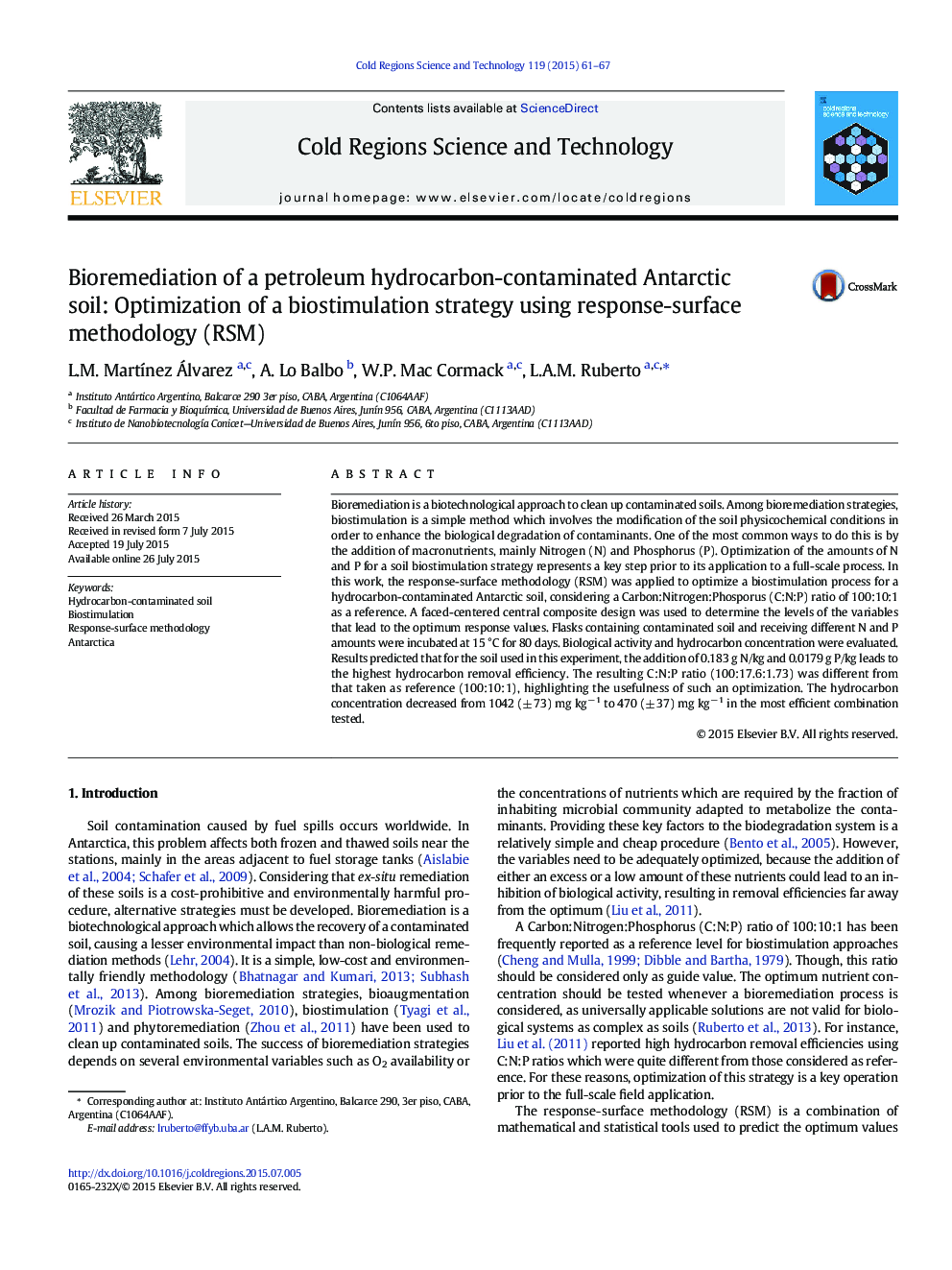| Article ID | Journal | Published Year | Pages | File Type |
|---|---|---|---|---|
| 6426748 | Cold Regions Science and Technology | 2015 | 7 Pages |
â¢C:N:P ratio was optimized for biostimulation of a Antarctic hydrocarbon-contaminated soil.â¢The optimum C:N:P ratio showed to be quite different from the reference one.â¢Biological activity showed a similar pattern than removal efficiency.â¢This optimization allows a rational full-scale treatment.
Bioremediation is a biotechnological approach to clean up contaminated soils. Among bioremediation strategies, biostimulation is a simple method which involves the modification of the soil physicochemical conditions in order to enhance the biological degradation of contaminants. One of the most common ways to do this is by the addition of macronutrients, mainly Nitrogen (N) and Phosphorus (P). Optimization of the amounts of N and P for a soil biostimulation strategy represents a key step prior to its application to a full-scale process. In this work, the response-surface methodology (RSM) was applied to optimize a biostimulation process for a hydrocarbon-contaminated Antarctic soil, considering a Carbon:Nitrogen:Phosporus (C:N:P) ratio of 100:10:1 as a reference. A faced-centered central composite design was used to determine the levels of the variables that lead to the optimum response values. Flasks containing contaminated soil and receiving different N and P amounts were incubated at 15 °C for 80 days. Biological activity and hydrocarbon concentration were evaluated. Results predicted that for the soil used in this experiment, the addition of 0.183 g N/kg and 0.0179 g P/kg leads to the highest hydrocarbon removal efficiency. The resulting C:N:P ratio (100:17.6:1.73) was different from that taken as reference (100:10:1), highlighting the usefulness of such an optimization. The hydrocarbon concentration decreased from 1042 (± 73) mg kgâ 1 to 470 (± 37) mg kgâ 1 in the most efficient combination tested.
